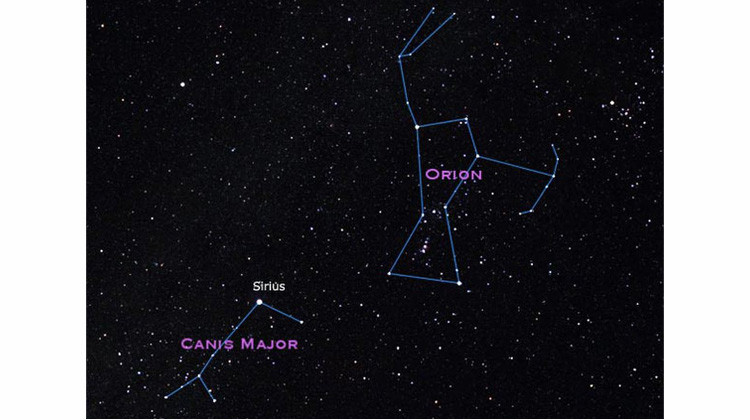Back to: Weekend Sky Report

Image Info: Made with starry night software - Space.com
Winter Triangle (Sirius)
January 25, 2019
Around 9pm (Friday, January 25, 2019), look low to the southeast to find bright white, twinkling Sirius. Above it, you’ll see that iconic winter constellation Orion the Hunter. The orange star at his shoulder is the red supergiant Betelgeuse. Draw a line between Sirius and Betelgeuse, then look to the left, or east to find Procyon (PRO-see-on), another bright white star, and there you have it. A nearly perfect equilateral triangle of bright evening stars.
Each star in the winter triangle is interesting, but let’s focus on Sirius. It’s twice the mass of our sun, but it’s much younger… where our sun is over 4.5 billion years old, Sirius isn’t even a quarter billion years old. Sirius is also 25 times brighter than our sun. All of those factors put together help to explain why it’s the brightest star in the night sky. Its mass helps to explain its age… more massive stars burn hotter, but don’t live as long. That, and the fact that it’s only 8.5 light years away.
And if you look at Sirius long enough, you’ll notice a lot of twinkling… that’s less about the star itself, and more about the Earth’s atmosphere. Yes, the brighter the star, the more apparent the twinkling…but the twinkling only happens because it gets refracted through the atmosphere, and the atmosphere is variable… it’s thicker in some places and thinner in others. So when you shine a bright, distant light through a variable atmosphere, it twinkles.
So tonight, brave the cold, find bright, twinkling Sirius, and from that, the winter triangle.
 DONATE
DONATE














 Support WFYI. We can't do it without you.
Support WFYI. We can't do it without you.